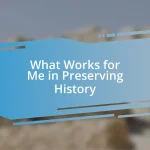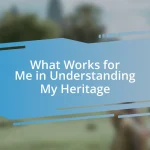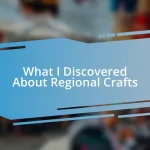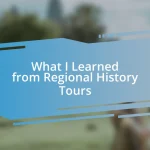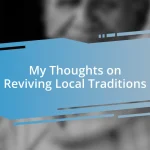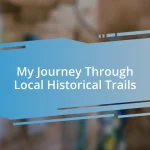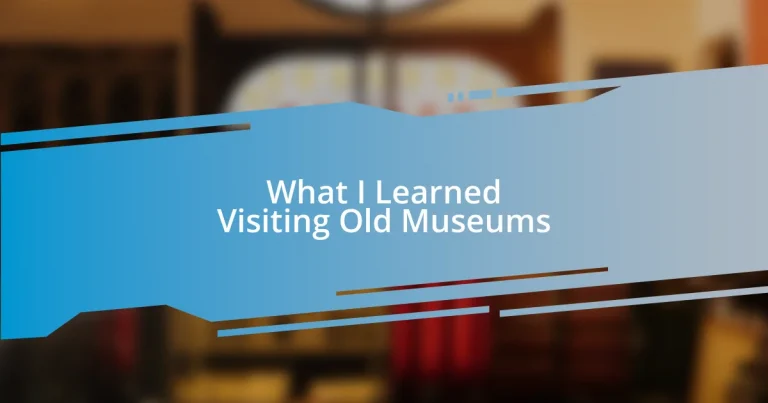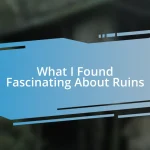Key takeaways:
- Old museums serve as vital connections to history, showcasing artifacts that embody the stories and craftsmanship of past generations.
- Visiting museums fosters curiosity, cultural preservation, and engaging educational experiences that deepen our understanding of history and society.
- Guided tours enhance museum visits by providing expert insights that bring exhibits to life, encouraging critical reflection on the connections between past and present.
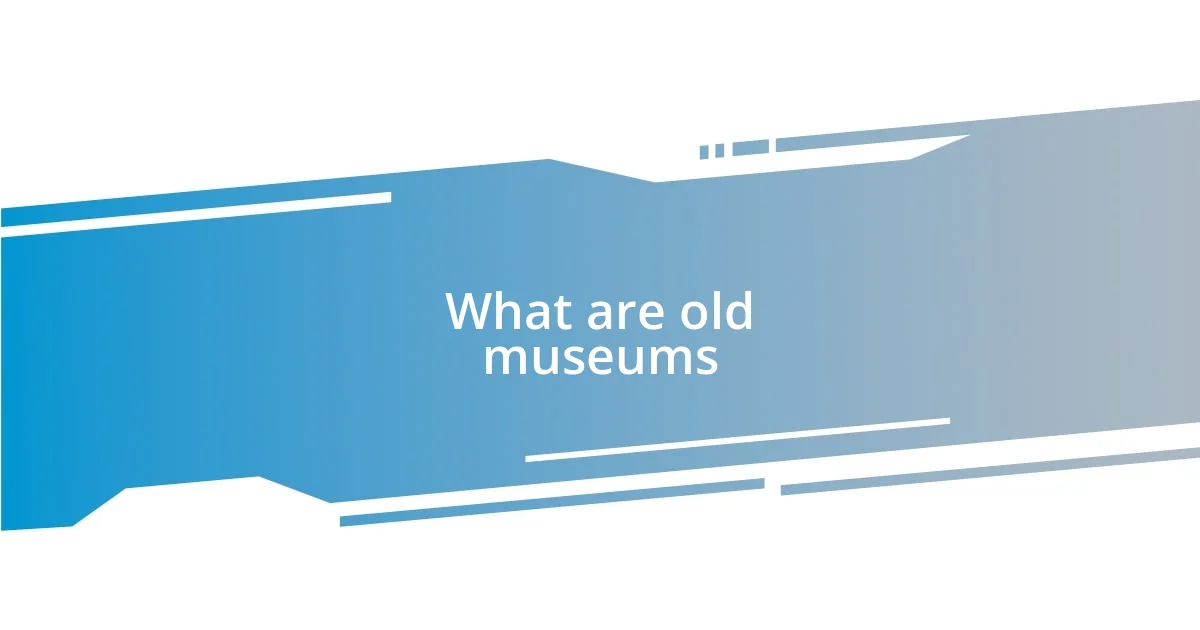
What are old museums
Old museums are often charming time capsules that hold the past within their walls. When I first stepped into one, I was immediately struck by how the air felt thick with stories waiting to be uncovered. Each artifact seemed to whisper the secrets of ages long gone, igniting a sense of awe about the lives that once filled these spaces.
These museums typically showcase collections that focus on regional history or unique cultural artifacts, making them invaluable to understanding local heritage. I remember wandering through a dusty, dimly lit room in a small-town museum, where a vintage typewriter sat under a glass case. It prompted me to wonder: who had typed letters on it, and what dreams had they poured into those pages? Such moments made the past feel tangible, connecting me to the very human experiences that shaped it.
They often exhibit the kind of craftsmanship and imagination that we sometimes overlook in our modern, fast-paced lives. I found myself captivated by a hand-painted vase, its colors still vibrant after decades. It made me reflect on the dedication of the artisans behind these pieces. Isn’t it powerful to think that the same hands touched them that many years ago? Old museums remind us that history is not just a series of dates but a collection of vibrant stories that continue to resonate with us today.
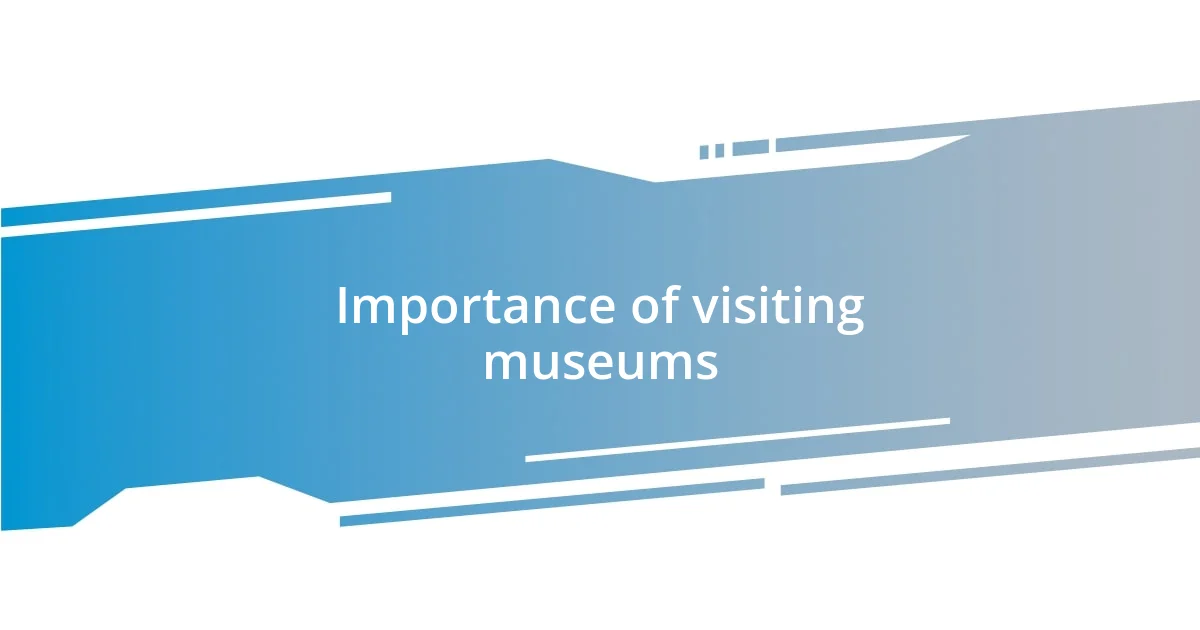
Importance of visiting museums
Visiting museums holds immense importance, as they serve as gateways to the past. During my visits to various old museums, I’ve often felt a unique sense of connection to history. One particular instance that stands out is when I gazed at a rustic wooden ship model displayed in a small coastal museum. It transported me to a time when explorers braved the sea, igniting dreams of adventure and discovery. Such experiences underscore how museums nourish our curiosity and imagination.
Moreover, museums are crucial for preserving cultural heritage. Each collection—whether it’s a display of ancient pottery or local folk art—reflects the identity and traditions of the communities it represents. I remember standing in front of a handcrafted quilt, each stitch telling a story of the families that made and used it. That quilt was more than just fabric; it embodied generations of love, labor, and resilience, reminding me of the values that shape our societies.
They also serve as educational spaces that foster learning in an engaging way. I once participated in an interactive exhibit at a natural history museum, where I had the chance to touch fossils. This hands-on experience deepened my understanding of evolution more than any textbook ever could. It’s easy to forget that learning can be both fun and impactful, but old museums excel at making history and science feel alive.
| Aspect | Importance |
|---|---|
| Connection to History | Provides insights and emotional connections to the past through artifacts |
| Cultural Preservation | Accumulates and showcases the identity and traditions of communities |
| Educational Value | Engages visitors with interactive and immersive learning experiences |
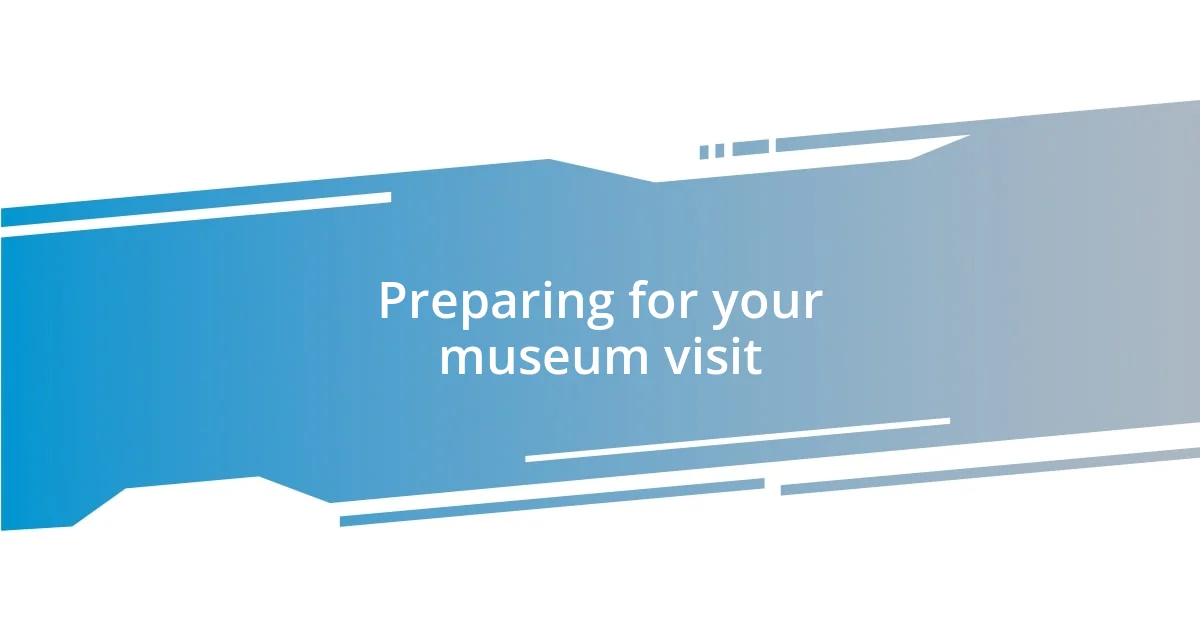
Preparing for your museum visit
Preparing for a museum visit is all about making the most of your time inside those storied walls. I often find that anticipation adds to the excitement. Before a visit, I like to research the museum’s collection, especially intriguing pieces that may catch my attention. That way, I feel more engaged and curious about what I’ll be encountering.
Here are some practical tips to ensure your visit is enjoyable:
- Check Opening Hours: Museums can have varying hours, especially on holidays. I once missed a favorite exhibit by arriving just an hour too late!
- Buy Tickets Online: This can save you time waiting in line, allowing you to dive into the experience right away.
- Dress Comfortably: You’ll want to stroll and linger, so wear shoes that you can walk in for hours.
- Plan Your Route: If the museum offers a map, I recommend using it. This can help you hit all the highlights you’re interested in without wandering aimlessly.
- Bring a Notebook: I sometimes jot down thoughts or feelings that a particular piece evokes. It turns out, reflecting on those moments later amplifies the experience in my memory.
Remembering to savor the experience is crucial—museums are a feast for the senses!
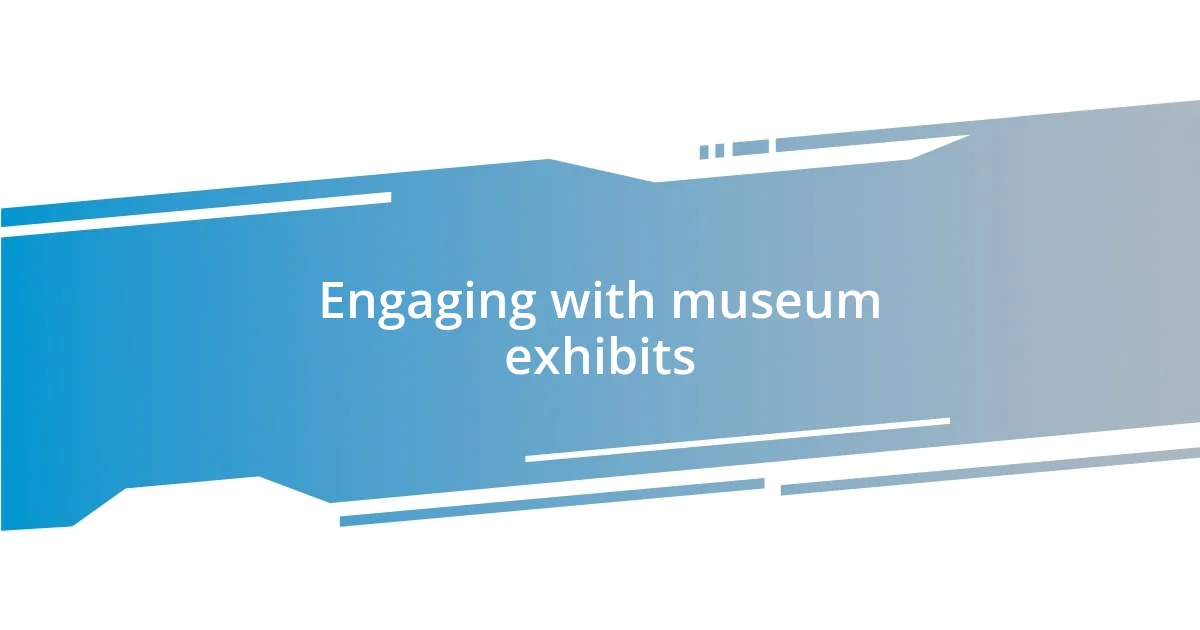
Engaging with museum exhibits
Engaging with museum exhibits is like stepping into a conversation with the past. I vividly recall how I stood mesmerized before an ancient Egyptian sarcophagus, its intricate carvings whispering secrets of a civilization long gone. How could such a simple object evoke such profound emotions? It’s moments like these that remind me that every artifact has a story waiting to be unraveled, urging us to look beyond what we see.
I’ve found that actively engaging with exhibits transforms a visit from passive observation to an immersive adventure. During one visit, a guide shared fascinating anecdotes about a collection of Victorian-era toys. Listening to their stories ignited my imagination and transported me to the days when children laughed and played with those very items. Isn’t it incredible how a simple toy can connect us to the innocence of childhood across centuries?
Interactive exhibits can take this engagement to the next level. I once encountered a virtual reality experience that let me walk through a medieval castle. The realistic sights and sounds enveloped me, making history feel tangible. I often wonder, how can we resist learning when it’s presented in such an engaging format? Through these experiences, museums spark curiosity and invite us to forge our own connections with the past, making every visit an opportunity for discovery.
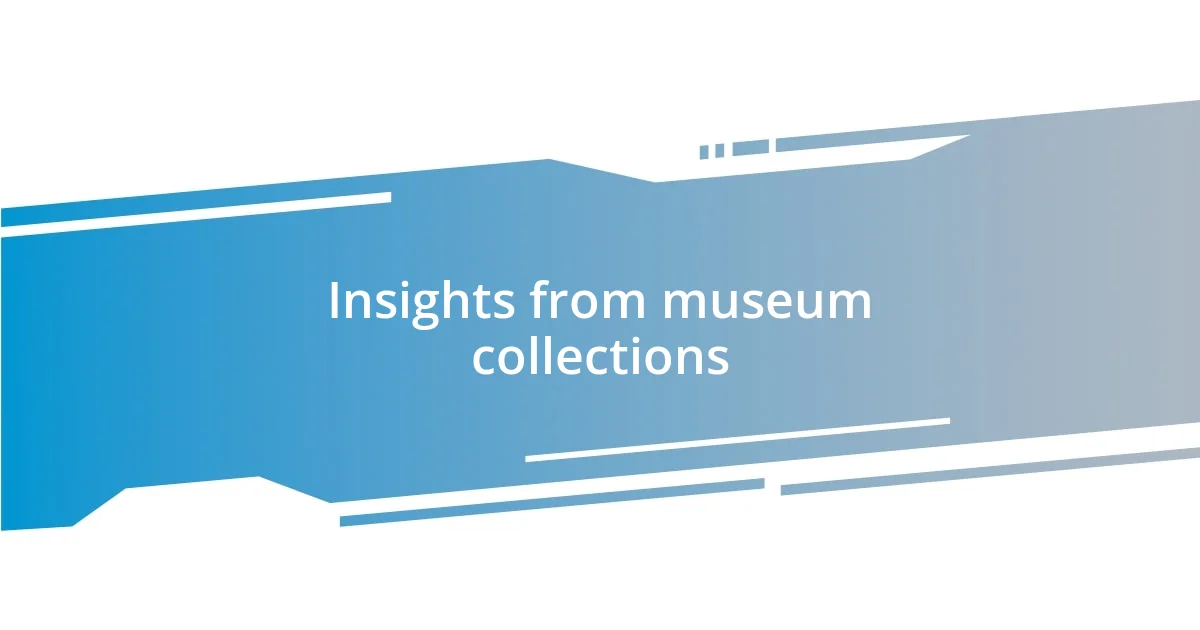
Insights from museum collections
Exploring museum collections reveals layers of history that I never anticipated. For instance, I remember standing before a collection of Renaissance paintings, marveling at the vibrant colors and masterful brushstrokes. Each piece captured a moment in time, and I couldn’t help but wonder what the artists were thinking as they worked. Were they aware of the legacy they were creating, or were they simply lost in their craft? This connection to the human experience is what makes these collections so striking.
In another visit, I encountered a small display of everyday objects from the 1800s—a simple teapot, a worn-out shoe, and even a handwritten letter. It struck me how ordinary items can encapsulate the lives and dreams of those who came before us. I found myself pondering the stories behind these artifacts. Who owned them? What were their hopes and struggles? These insights made history feel less like a distant past and more like a relatable narrative that still resonates today.
The thematic arrangements of museum collections also offer unique perspectives. I had the pleasure of navigating a collection that juxtaposed art and science, showcasing pieces that illustrated the relationship between creativity and innovation. I learned how inventions sparked artistic movements, expanding my appreciation for both disciplines. Have you ever considered how interconnected our world truly is? It’s these revelations that keep me returning to museums—each visit a new chance to unravel the complex tapestry of human creativity and experience.
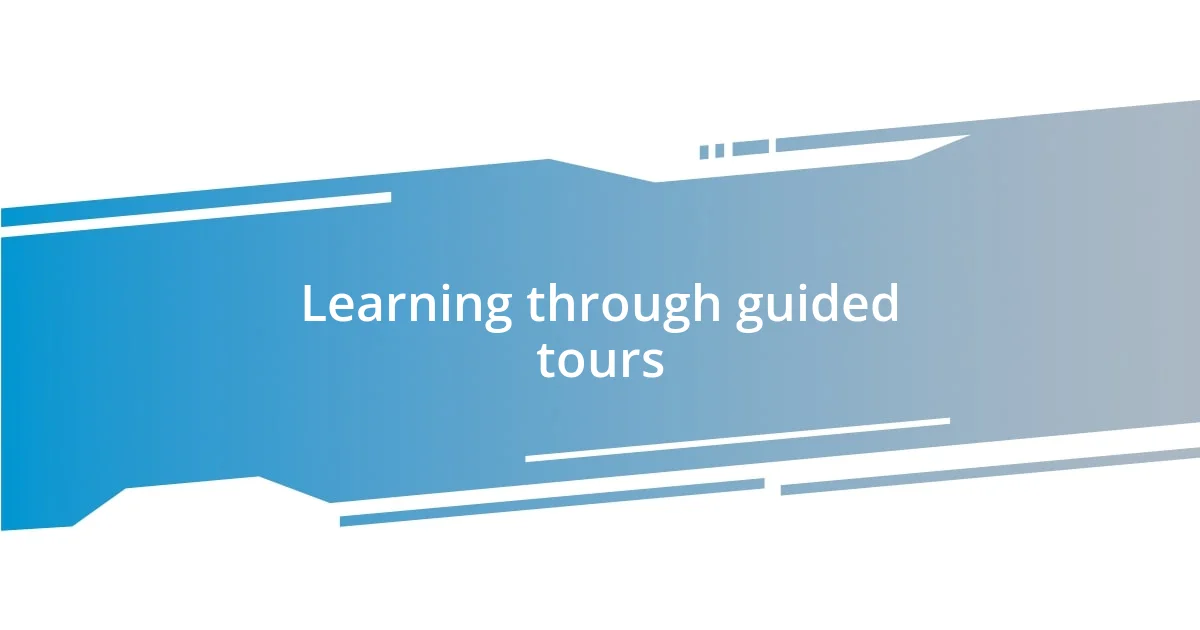
Learning through guided tours
Guided tours offer a fantastic way to deepen one’s understanding of museum exhibits. I’ll never forget a time when I joined a guided tour dedicated to ancient artifacts. The guide shared stories that brought the objects to life—like the tale of a model ship that sailed the seas of the Pacific, nearly bringing me to the edge of my seat with excitement. Have you ever felt that thrill when you realize you’re not just looking at something old, but witnessing a slice of history?
I find that having an expert lead the way can transform a mundane visit into an educational journey. During another tour, I was captivated by a passionate guide who explained the significance of each piece, weaving in cultural context that I hadn’t considered before. Can you imagine how easy it is to overlook important details without someone there to highlight them? Learning through guided commentary turned what could have been a simple afternoon into a memorable lesson in history.
Sometimes, guided tours also provoke deep reflection on our modern lives. I recall a thought-provoking moment during a tour focusing on societal changes through art. The guide pointed out how the themes in the art mirror the struggles of today. It made me wonder, how often do we forget to draw connections between past and present? Guided tours not only educate but also inspire us to think critically about ongoing narratives in our own lives.
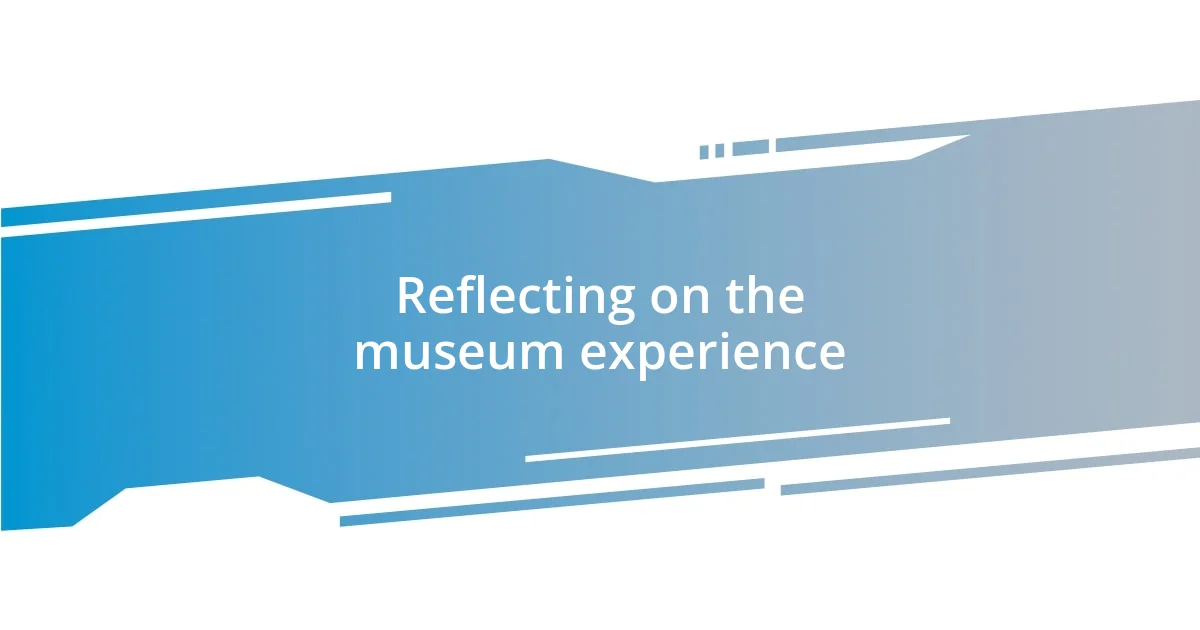
Reflecting on the museum experience
Reflecting on my experiences in museums often leaves me contemplating the weight of history. I remember standing in a dimly lit room filled with ancient pottery, each piece telling a tale from long ago. Have you ever felt a tangible connection to the past, as if you could almost hear the whispers of those who once held these objects? That moment made history feel alive for me, bridging the gap between eras.
There are times when I’ve wandered through exhibits and found myself lost in the stories behind the displays. One visit stands out vividly; I encountered a diary from a young girl living through a war. Reading her innocent yet poignant words brought tears to my eyes. It struck me how personal experiences, regardless of time, can resonate deeply across generations. It’s a reminder that even in our modern world, stories of resilience and hope are part of our shared humanity.
As I reflect on my museum visits, I often wonder about the unknown connections that art and history can ignite within us. For instance, after a day spent among relics and masterworks, I found myself inspired to explore my own creativity—perhaps starting that painting I had always postponed or picking up a book about a historical figure who intrigued me. Have you ever walked away from a museum feeling a spark of inspiration? Those moments of reflection transform simple visits into catalysts for personal growth and connection.
